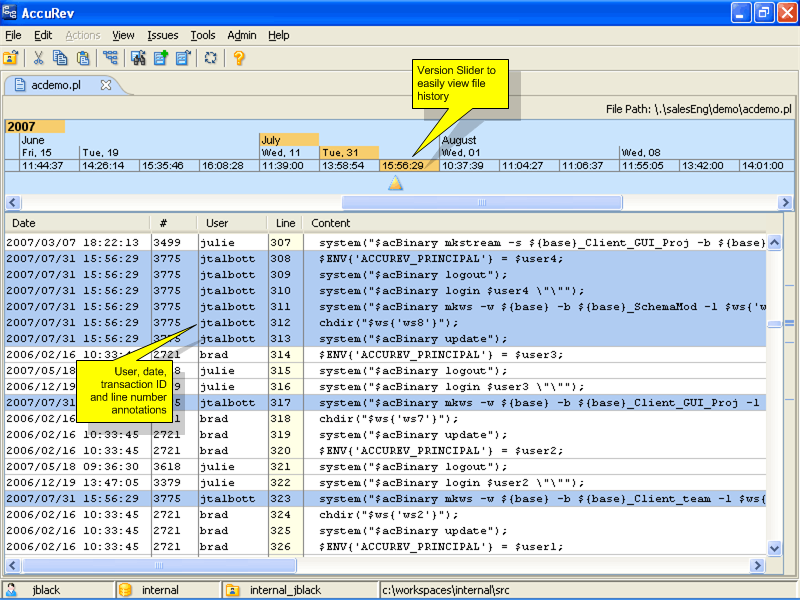This obviously requires the source file to be under source control. I would ideally like a tool which works under the IDE (Eclipse, Visual Studio, etc) - but an external tool would be nice, too. Obviously, it is possible manually go through previous versions of the file, and compare the various versions, but I am looking for a way to be able to see quickly who is responsible for a code section.
I am using CVS, but the tool should ideally work with different source control systems.


